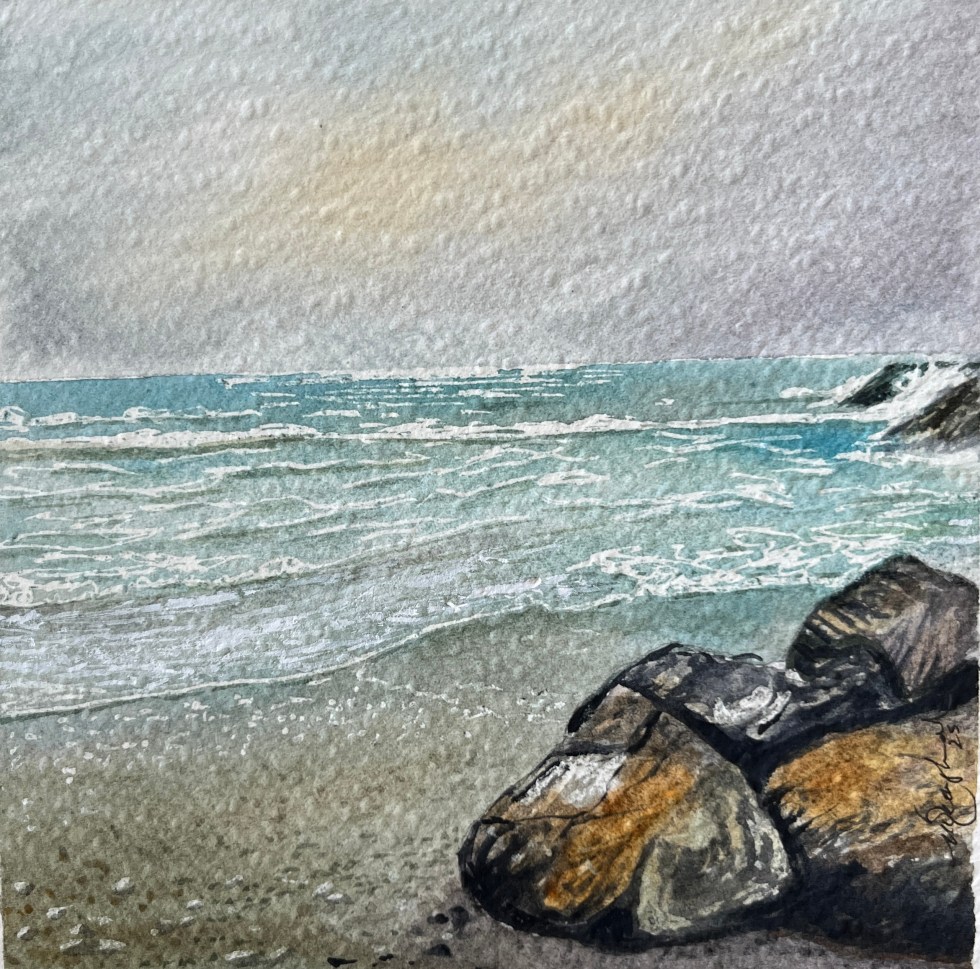
I just finishd the book on Monet’s life, that I was reading. Interesting fellow. I now have a better understanding of his art, and how he worked. There is a lot to take away, too much to talk about in one blog.
Monet regularily went out and about in the countryside, usually on his own, looking for images to paint. These wanderings might take some time, then ‘bingo’. Once he found the view he wanted, out came the easel and canvas, and so to work.
Me, myself and I, and usually herself, regularily go out and about. We both like a walk in the country (beach, cliff tops, woods etc), it’s good exercise, and I regularily have a ‘Monet moment’. This happens when I round a corner and there in front of me is a scene I would love to paint. It happens often enough. It is not feasable to bring my gear with me on these walks, so the camera on my phone is my way of recording the image. I therefore fully understand Monet’s obsession with finding the ‘right’ composition. I use the photo to record the detail, but I am fortunate to be able to hold the feeling in my mind for quite a long time. I dont need to return to the same spot, but I’ll paint the scene when I get back to my studio. I do believe though, that if Monet had a digital camera, he would have worked quite differently.
My most recent major ‘Monet moment’ occurred whilst driving between Kilamery and Kilmaganny, a winding road through the beautiful south Kilkenny countryside. I got a glimse of a field of blue flowers, and jammed on the brakes. Herself was a little alarmed. Reversing back I parked the car, I had to get into this field. It was late evening in September, the golden sun stretching accross the valley. The view was magnificent.
Fixing the feeling in my mind, and taking a good selection of reference photographs, including some of the little blue flower that sporadically covered the field, we headed off home. Thanks to Mr Google, I learned that the flower was Phacelia – used as a green manure. I hadn’t come accross it before. The field thus planted, was about forty acres, and it looked majestic. My rendering of it (A4 watercolour) is shown above. I think Monet guided me a little, in its execution.
Its a pity that Monet never came to Ireland. I would really love to see what he might have made of the Irish countryside. Still, if he did, we might not have the waterlillies.














